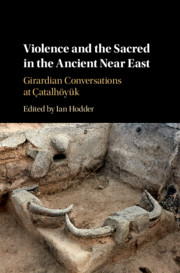Book contents
Part III - The Dialectics of Mimesis
Published online by Cambridge University Press: 04 March 2019
- Type
- Chapter
- Information
- Violence and the Sacred in the Ancient Near EastGirardian Conversations at Çatalhöyük, pp. 151 - 232Publisher: Cambridge University PressPrint publication year: 2019



